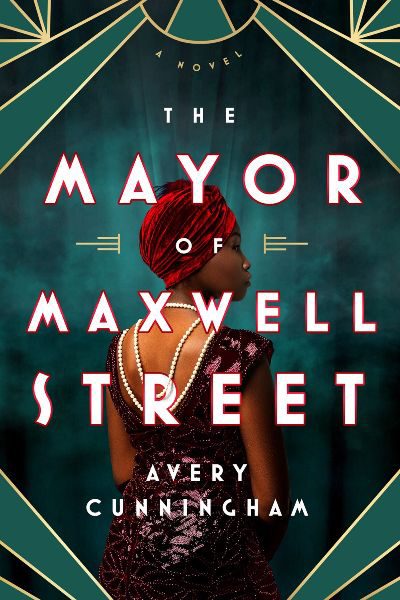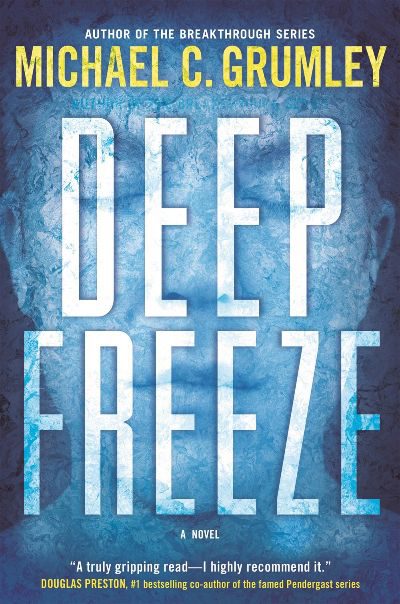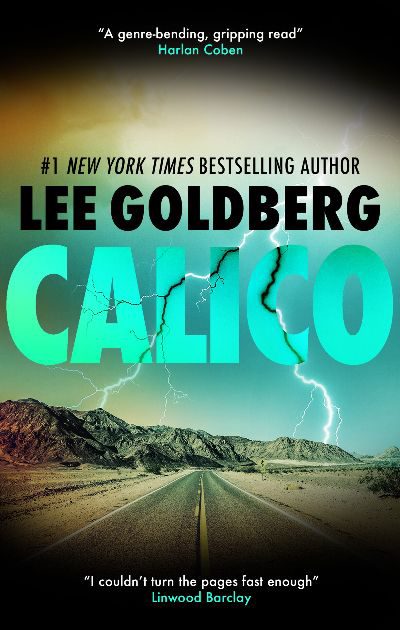Nelly Sawyer’s father is a Kentucky horse breeder and the richest Black man in America. The family is in prohibition-era Chicago for Nelly’s coming out, when she’s expected to meet the country’s most eligible young Black men and find one to marry. She doesn’t fit in at the events, disdains the whole charade, and just wants to be alone to grieve the recent death of her brother. She’s also eager to pursue a career in journalism, not easy for a woman, let alone a Black woman who’s been raised in genteel isolation. Outside the cotillion and other events are no better, as white Chicagoans take the young woman for a servant. Nelly is soon distracted, though, when she’s surprised by potential love interests: Jay Shorey, a mysterious, beautifully dressed speakeasy manager, and the more suitable, at least in society’s view, Tomás Escalante y Roche, a Marquis who is this season’s catch. When Nelly is challenged to find and identify the dangerous Mayor of Maxwell Street to keep the newspaper job she’s threatened with losing, both men and Nelly herself are thrown into a vicious game of deceit that adds high suspense and sometimes terrible danger to the politics-laden season. An evocative and thought-provoking debut, and just look at that cover!
Review
A bus ride becomes a nightmare when John Reiff wakes up to see the bus plunge into a freezing river, and he and several others are trapped. But that is not the end for him. He then wakes up in what appears to his confused mind to be a mix of a hospital and a laboratory. The doctors there tell him that he was cryogenically frozen due to the accident conditions, and with the experimental equipment on site, they could revive him. As John gathers his strength, he realizes that the doctors are not as forthcoming with him as they should be. He has secrets of his own, as he begins to have terrifying visions of flames mixed in with the pain from his resurrection. The truth and its ramifications will jeopardize the lives of John and the doctors who brought him back to life. Robin Cook meets Blake Crouch in this intense thriller that will appeal to fans of mysteries that feature paranoid conspiracies and a hint of science fiction. While not a cliffhanger, the ending will still have readers demanding the next book right away.
This doozy of a thriller centers on true-crime author Amanda Bailey, who is working on a book about the Alperton Angels, a suicide cult that 18 years ago mostly killed itself off. Survivors were few: Gabriel, the now-jailed leader; a teen boy and girl, long disappeared; and their newborn baby, also gone missing. Finding the baby, now that he or she is reaching maturity, is central to the story—and the success of Amanda’s book. Like Hallett’s previous novels (The Appeal and The Twyford Code), this book is immensely clever, written in a dossier style that serves up Amanda’s research, communication, and discoveries, from emails to texts, from film treatments to transcripts, and from casual phone calls with her assistant to historical news stories. Another author, and sort of frenemy, Oliver Menzies, is also writing a book about the Angels, and eventually he and Amanda are forced to share their information, descending together into the deep, dark world of the Angels. Some will find the book’s reliance on multiple texts too artificial, but most readers will be dazzled by Hallett’s creativity, will enjoy their engagement in solving the book’s many puzzles, and will love the dynamite conclusion.
Can a house hold evil? Can it hold memories? Nellie Lester fears the worst when she accepts a nursing job in New Harmony, Michigan, an island town where she spent her early life. But she’s desperate to get out of the flu pandemic that hit her Chicago hospital and everywhere else, in the aftermath of the Great War. Perhaps even more compelling is her need to find out who her father was. The only remnant of the man is a photograph that might show Nellie and her parents years ago in New Harmony. Arriving, the nurse finds that Ravenwood Manor and its owner, William Thiery, hold forbidding reputations in the area—the house is haunted, they say, and William is a frightening man who cares little for his wife and the baby that Nellie is there to deliver. Then a body is found with a fatal head wound, and Nellie doesn’t accept that the death was an accident. She’s not there to be a detective, her boss is quick to point out, but the danger is mounting. Nellie must solve mysteries from the past and in the present to save herself and, she hopes, get out of New Harmony. Supernatural elements —scariest is a death portrait of a child in which the subject seems to progressively rot—add to the domestic drama and historical wrongs, creating a gothic suspense and a feisty protagonist to remember.
One of the darkest, but funniest, novels I’ve read in a long time—largely thanks to the wonderful narrator, Lucy Chase. Lucy is taking a break from Los Angeles and heading back to her hometown of Plumpton, Texas. It’s been five years since she’s been in Plumpton, where nearly everyone, including her parents, is convinced she murdered Savvy, her best friend. After all, she was found leaving the scene of the crime, covered in Savvy’s blood, Savvy’s DNA under her nails, and suffering from amnesia. Kind of a downer, right? The one exception is her Grandma, who believes Lucy’s innocence and uses her 80th birthday party to lure Lucy home. It also seems like Ben Owens, the editor of the hugely popular true crime podcast “Listen for the Lie” is in town, with Lucy in his cross-hairs. Grandma is convinced that the handsome Ben will end up exonerating Lucy—and Lucy ends up sort of working with, and sleeping with, Ben, while also fooling around with a few other potential witnesses, like her ex-husband. The prose snaps and the plot speeds along in Tintera’s portrayal of small town, alcohol-addled, smiling-to-your-face-while-trashing-you-behind-your-back Texas. This would make a perfect series—and what fun to cast! For those who enjoyed Jennifer Hillier’s Things We Do in the Dark and Bella Mackie’s How to Kill Your Family.
A missing-person case becomes a possible homicide investigation, and an ex-LAPD detective becomes tangled in a bizarre mystery in Goldberg’s latest thriller. Beth McDade was forced out of the LAPD, and the only place willing to hire her is in the isolated area of Barstow, California. Everyone knows everybody in this area of the state, and even though there are few people spread out over many miles in the desert, she hopes to escape her past and find a second chance. The disappearance of a man on the way to visit his daughter and an accident involving a motor home running over someone keep her busy. Still, the more she investigates, the more she will question her sanity. Goldberg also takes the time to explore the life of Ben, who becomes a chef in the mining town of Calico in the late 1800s. What Ben uncovers in the past could very well help Beth in the present. The journeys of both Ben and Beth are complicated and compelling, and what Goldberg has crafted is a page-turning novel that has surprises up to the final page. Calico is arguably one of his best.
Elizabeth is in a rut. Her job isn’t so satisfying, and her marriage is on the rocks. Her every move seems to trigger a report by her husband, David, to their therapist. She feels ganged up on and adrift, which is bad enough. That descends into depression, which others believe is paranoia, when she finds her neighbor Patricia dead. Others say it’s suicide, but Elizabeth is sure it was murder and is determined to find the culprit. She has a willing sidekick in her sleuthing in Brianna, the assistant that David insists his wife take on to help out at home. Brianna, who is Black, is all too willing to be white Elizabeth’s new best friend, Watson to her Sherlock, and de facto therapist, given that Brianna has a strong motivation to insert herself into her employers’ upscale Memphis neighborhood: someone there called the cops on her son and they killed him. As the plot twists and turns, deceptions build, and though readers have the benefit of a birds’ eye view of the story, surprises are in store. This is reminiscent of Elizabeth Day’s Magpie, with its suburban setting and overcrowded marriage; the effects of gentrification and racism also loom large. For fans of Magpie Murders and novels that pack in the psychological drama.
A superb novel of suspense that alternates between the terrifying present and the complex past that led up to this moment. A woman, sleeping near her two young children in a Colonial home in Massachusetts town, hears what she thinks are footsteps. Could there be anything scarier? Except this is an old house, always creaking. Perhaps it’s her imagination. Then, thanks to the nightlight, she sees a man, a huge man, slowly climbing the stairs, as “his fingers wrap the banister like white spider legs.” What should she do? A blizzard rages outside, making escape impossible. Then she remembers that the house has a tiny, hidden room, and she hustles the children and herself into it, while still worrying how they will be able to survive. Sierra keeps the adrenaline pumping, but takes breaks from the primary narrative to explore the woman’s life, from a less than happy marriage to an abusive relationship with her father-in-law to a patriarchal society that refuses to believe her. This unique, thinking-person’s thriller would be great for a book discussion, there’s so much here to unpack.
In the rural Ontario Bliss House live 17-year-old Cam; his cousins Wes, who’s in his late twenties; and Dorie, who’s five and is a distant relative Gramp and Gran took in. Gran died a few months ago and her abusive, alcoholic spouse not long after, but Gramp is not quite gone, his corpse hidden under a tarp in the house’s cold room. With no will leaving the house and farm to the remaining family, what else can they do? Wild-child Dorie is able to keep Gramp’s death a secret, as well as her knowledge of the game Cam and Wes play in Wes’s bedroom, the same one, she thinks, the nasty neighbor boy, Kyle, wanted to play with her in the barn. The ramshackle family is just starting to believe things are safe when Kyle’s mother sets the Misses Gurney on them. Beulah and Audrey Gurney are with Bethel Baptist and Dorie’s attire—or lack of it—when she plays in the yard is, they say, “the Lord’s business.” They brush Kyle’s behavior aside (“They’re Pentecostal”) but cannot see their way to ignoring Wes and Cam’s “sin,” launching the Bliss boys on a startlingly violent and engrossing path to keep their family and love safe from the state. Young adults as well as adult readers who aren’t squeamish (terms like “corpseooze” stand out) will root hard for this loving family and stay up to find out how their bizarre, Murphy’s-law-ridden odyssey turns out. Playwright Bartley’s previous fiction is set in Balkan war zones, making this memorable work a fresh start.
In cozies, we often meet our hero when they are in a state of flux, and Death by Demo is a classic example. Jaime is recently divorced—her husband was having an affair—and the prenuptial she signed without reading has left her nearly broke. She and her ne’er-do-well ex-husband ran a highly successful construction and interior design firm in Charlotte, NC, but now all she’s left with is a dilapidated Queen Anne style house and her best friend’s couch. While everyone expects Jaime to sell the house, she takes a certain liking to it and decides to renovate it on her own. That’s part of what makes this book so interesting, watching Jamie—who’s a real carpenter—put the historic home back together while she ruminates on how her life fell apart. But in the midst of some serious demolition, she comes across a body walled up in her new home. Tragic, for sure. But also annoying, as the house is now declared a crime scene and Jaime is forced to abandon the one thing that’s keeping her sane. Until it dawns on her that maybe law enforcement needs a little help. Well-written, nicely plotted, with great insights into the renovation industry and a cute and sensitive next door neighbor. Cozy readers will delight in this discovery.










